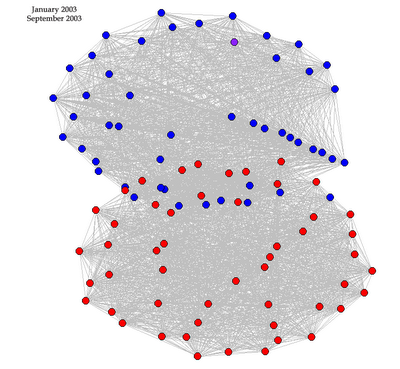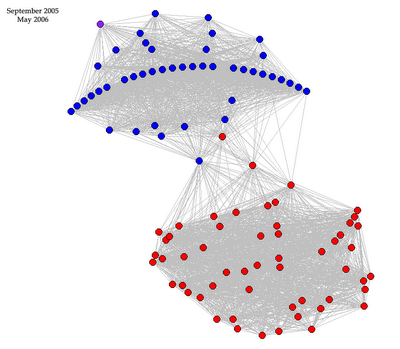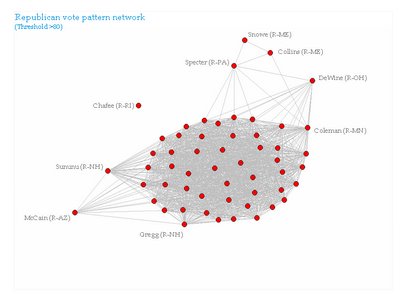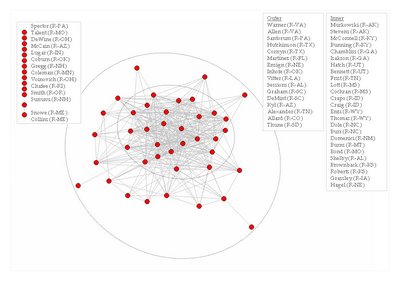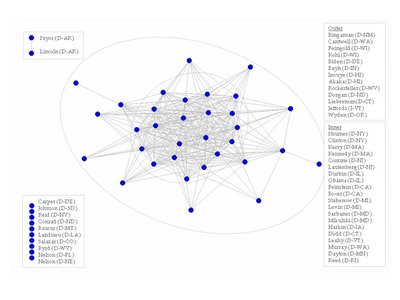Senate Voting Patterns, part 3
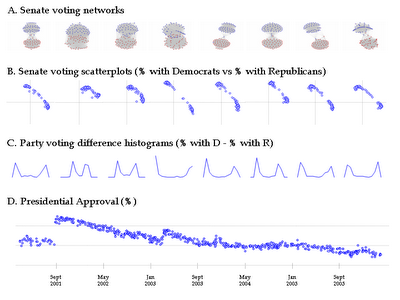
This is the final installment of the senate voting network analysis. I divided the last 64 months into eight equal periods and analyzed the senate voting patterns for each period. For an explanation of how I made the networks please see my last post. On a few of the graphs I have pointed out some of the senators, if there are specific senators that people are interested in I can identify them. Each individual network is shown below.
Above is a summary showing all eight networks (A) with additional plots. Part B of the above figure shows eight scatterplots as a view of how often senators vote within and outside their party (x-axis "% with Democrats", y-axis "% with Republicans"). The cross identifies the 50% mark. Part C of the above figure is an additional view of the same data. I made eight histograms of the difference between each senators vote within and outside the party. In this case, the right humps are made up of Republicans and the left Democrats. The final part (D) of the figure shows how the president's approval rating (based on many polls) has changed over the time period.
Although my original purpose for this blog was to simply show some interesting visuals of data, I do feel the need to point out some "findings". In the graphic above one can see the ebb and flow of polarization in the senate. The degree of polarization (best seen in B and C) changes with important events such as September 11th (less polarized), Invasion of Iraq (more polarized) and 2004 election (slightly less polarized). I find the period that included the invasion of Iraq as the most interesting. Although the senate is more polarized, based on a comparison of voting within and outside of a senator's party (again, above part B and C), the network does not show this. Instead, the network seems to lose much of its structure.
The other interesting thing that I have noticed from looking at these networks is that senators from New Hampshire and Arizona are consistently the most conservative. I am scoring conservative and liberal based on placement within the network (for a more thorough and quantitatively rigorous approach please see vote view). Although McCain is less consistent, he does tend to vote similar to his "Grand Canyon State" confederate, Kyl. Of the two, Arizona and New Hampshire, I find New Hampshire more interesting because of the disproportionate power that the New Hampshire voters possess. I'll leave it to others to debate how the out-dated primary system needs to be changed.



